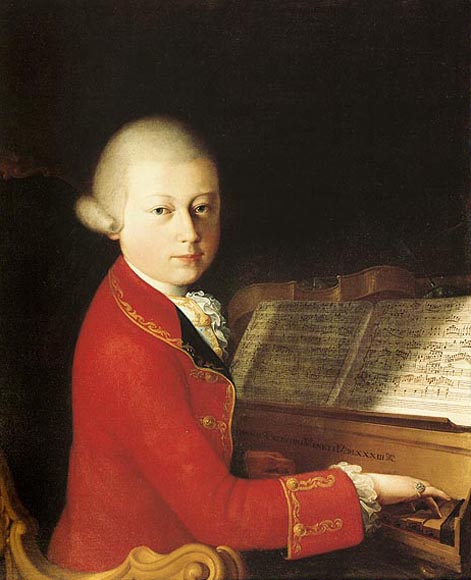
The world of 18th century opera was a markedly different environment in many ways than the modern day opera house. With no copyright protection for composers, many of them supervised the first productions of their operas to earn some money off of their music before it was pirated by other opera companies and publishers. But the best singers back then, like the best singers now, were the stars of the show. Most opera composers wrote music with specific singers in mind, and the singers themselves would take many liberties with the music for the sake of displaying particular vocal strong points, so much that the original music could get lost in a sea of added ornamentation, runs and long held notes.
Composers could be part of this cavalier attitude towards opera as well. A custom of the time was for composers to write arias for specific singers that were called insertion arias because they would be inserted in place of an original aria written by the opera's composer. In Mozart's time the use of insertion arias had been going on for so long that they had become a tradition, and many of Mozart's concert arias were originally written as insertion arias. Vorrei spiegarvi, oh Dio! (Let me explain, oh God!) K.418 is just such an insertion aria. Mozart wrote it for his sister-in-law Aloysia Weber, a soprano that had a successful career on the Vienna opera stage. At one time Mozart had wanted to marry Aloysia, but he ended up marrying her sister Constanze instead. Mozart wrote other insertion arias for Aloysia and she performed roles in some of his operas as well. She must have been a fine singer because the arias Mozart wrote for her are quite demanding.
Vorrei spiegarvi, oh Dio! was written to be inserted in an opera titled Il curioso indiscreto (The Curious, Indiscreet Man) by the composer Pasquale Anfossi. The libretto was based on the book Don Quixote. The aria begins in a slow tempo with muted strings and a beautiful part for oboe that continues in duet with the soprano who sings the part of Clorinda, who is in love with a Count, who is promised in marriage to another woman named Emilia. Clorinda sings that she wishes she could explain to him why she appears not to return his
love. The tempo quickens in the second part of the aria as she urges him to leave
her, telling him to go to Emilia. Mozart puts the soprano through her paces as he uses notes that span over two octaves in this effective and impressive aria.
Let me explain, oh God,
What my grief is!
But fate has condemned me
To weep and stay silent.
My heart may not pine
For the one I would like to love
Making me seem hard-hearted
And cruel.
Ah, Count, part from me,
Run, flee
Far away from me;
Your beloved Emilia awaits you
Don't let her languish,
She is worthy of love.
Ah, pitiless stars!
You are hostile to me.
I am lost when he stays.
Part from me, run,
Speak not of love,
Her heart is yours.

























